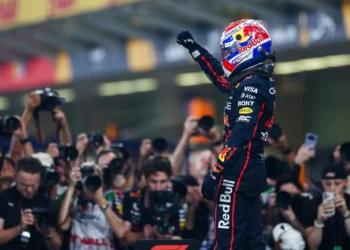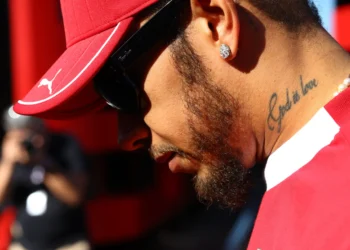In the last few races, four teams made adjustments to the halo fairing or cockpit headrest, highlighting the sensitivity of the area around the driver’s head to aerodynamics. Mercedes added small fins behind the halo in Shanghai to control airflow and improve airflow to the rear wing. Williams made a minimal modification to the shape of the fairing in the central part of the halo to improve aerodynamic efficiency. RB modified the shape of the headrest to reduce airflow separation. Alpine realigned their halo fins in Monaco to better distribute airflow to the rear wing. These changes may not be visually significant, but they demonstrate the potential benefits of optimizing the driver’s head area, which has been a challenge for many years.
Looking back, in 1996, F1 introduced regulations that required a headrest to protect drivers’ heads from side impacts. This led to the implementation of various designs. Ross Brawn, at the time with Benetton, criticized the designs of Williams and Jordan, unfavorably comparing them to those of his team and Ferrari. This prompted teams to closely examine airflow around the driver’s head and the airbox opening in 1997. Airflow within the airbox had a significant impact on engine performance, with positive pressure resulting in more power. Williams had an advantage in airbox design by knowing their drivers earlier in the car design process.
The precise position of the pilot’s head was crucial in defining this area. Differences in height and body proportions of the pilots could affect the overall appearance. Flow patterns in the airbox and around the pilot’s head were similar between Williams and Jordan, although Williams’ design was more detailed. Increasing the size of the opening did not guarantee higher pressure and power. The engine’s ignition order and fuel transfer between cylinders also influenced the airflow. Modern turbo engines have less dependence on intake design, but turbulence caused by the pilot’s helmet can affect cooling efficiency and downforce. George Russell has felt turbulence in his helmet this season.
The headrest and rear mounting of the halo can obstruct airflow near the pilot’s head. Limited-size fairings around the halo structure can redirect airflow. The flow structure around the headrest is influenced by the helmet design. Adding cooling duct openings in the blocked area can help manage airflow and maintain consistency. The Red Bull car illustrates this concept with its prominent inlets. Every component of the car plays a crucial role in aerodynamic performance, and getting the details of the headrest, pilot position, and halo fairings right can have a significant impact on lap times. Therefore, more developments are expected in this area.










